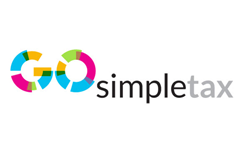
For the uninitiated, you may be wondering what a ‘second payment on account’ is. If you’re a freelancer or have any earnings outside PAYE, you may need to make two advance payments on account towards your current year’s tax bill.
As most of you will be aware, the date of the first payment on account is January 31 - which is also the deadline for your self-assessment. However, without the buzz of tax conversation, the second, summer deadline is less well-known and can catch out even the most diligent of taxpayers.
Not everyone will need to make payments on account, but with the July 31 deadline fast approaching, it’s best to be certain well before the due date. Mike Parkes from GoSimpleTax provides clarification.
 New tax year – new you
New tax year – new you
You can file your self-assessment from the 6th April. Know your tax owed and start the tax year in control.
For self-employed individuals, sole traders, or those with non-PAYE income, GoSimpleTax provides direct self-assessment filing with HMRC, offering helpful hints and savings tips throughout the process. Let GoSimpleTax handle all calculations.
What is a second payment on account?
For those who are required to make payments on account, your estimated tax liability for the year ahead is split into two in order to make the payment easier to manage.
For example, if your tax bill for 2022/23 was £5,000, then HMRC will require two payments on account of £2,500 each to go towards your 2023/24 tax bill. The first will be due on January 31 2024, and the second on July 31 2024.
You will only be required to make payments on account if your self-assessment bill was for more than £1,000. Also, if over 80% of your annual tax bill is deducted at source (from employment, for example), you are exempt from making payments on account.
For instance, you may have a total tax bill of £10,000 for 2022/23, £8,200 of which is paid via your salary - so you just need to make one payment of £1,800 in January, and no payments on account (as 82% of your tax is paid at source, through your salary).
How are payments on account calculated?
It’s important to remember that payments on account are based on your earnings from the previous year. Should your income dramatically fall, your payments on account can be reduced to reflect a lower income. You can therefore make a claim to reduce your payments on account.
Be careful though: reduce them too much and you can incur an interest charge on any tax shortfall. The opposite applies if your income increases (as this will result in a ‘balancing payment’ on January 31 of any shortfall from your two payments on account).
It’s important to be aware of these hidden costs and be alert to the consequences of any significant changes to your earnings.
If you’re struggling to find the relevant information to make your second payment on account, check your personal tax account online or any HMRC correspondence you’ve received.
What if I can’t afford it?
Contact HMRC well before July 31 if you’re concerned you can't make payment. They may be able to arrange a payment plan. Should you miss the deadline without informing them, you’ll start to accrue interest and penalties.
HMRC are particularly stern with on account payments. If you haven’t paid off the tax by the following January, you can be expected to pay 5% of the total charge along with the accrued interest.
Ultimately, be sure to stay aware of your responsibilities throughout the year to avoid any hidden costs and charges.
Copyright 2024. Sponsored post by Mike Parkes of GoSimpleTax - tax return software that can help you manage your self assessment.